How To Choose A Technical Swimsuit
Gear Advice
|
October 24, 2018
What is a Technical Suit?
Technical suits are currently categorized primarily by the type of seam they are constructed with. The removal of traditional seams makes these suits more like a second skin, less likely to have bumps and threads that would create resistance in the water. Bonded seams are fused by heat and pressure; they are lighter weight and provide a smoother surface. Fabric type also influences tiers of tech suits, affecting primarily price. Knit fabrics have tiny loops like a braid and have superior stretch than woven fabrics because they are made from one continuous thread. Woven fabrics are made up of microscopic criss crosses that you could see with a magnifying glass. Woven fabrics will also stretch but only in one direction. Another identifying mark of a technical suit is the Fina stamp, generally a white sticker fused on the outside of the suit. This identifier validates the suit is Fina approved and that it has successfully gone through and paid for the testing process. Learn More About The Different Brands of Tech Suits:History of Technical Swimsuits
Technical suits more or less made their debut around the year 2000. Swimmers preparing for the 2000 Olympic Trials in the US were grappling to get their hands on the latest and greatest that was sure to make them go faster and feel better in the water. I remember, because I was there. It was a giant question mark at the time; would the suits even be legal? Would they be accessible to all swimmers? Could the manufacturers deliver in time? My coach picked up my Speedo Fastskin at the meet in Indianapolis, on the pool deck, just like hundreds of my competitors. This was only the beginning. After Speedo, other industry staples followed suit and then the startup companies followed. But by 2009 it was clear there was a problem. Swimmers were dropping ridiculous amounts of time at elite levels. World records were falling, one after another after another. There were too few regulations for manufacturers and the suits were becoming much more than just suits. World Championships in Rome opened the swimming world’s eyes. By this time I was retired, but managed to get my hands on one of these super suits. Primarily a butterflier, I went to the pool early one morning to test out this magical suit I’d heard so much about. On two days a week training, a 200 warm up at the local YMCA, AND a push start I drop pushed a 50 yard butterfly and went around a 25 low. Pretty spectacular. Fina eventually stepped in and made major regulations, resulting in the current process and their sticker stamp of approval. What is available now? Familiar names still blanket the industry. Speedo, TYR, and Arena are the most common. Each offers various tiers of technical suit. Some more budget friendly that may not have all the bells and whistles and others that are definitely budget busters.Speedo Tech Suits
The original! They have expanded their line since the introduction of ‘sharkskin’ technology from 2000. Today Speedo offers the Fastskin LZR line. For both genders the LZR Racer X is their top suit. It can be purchased with an open or closed back for women and in either a brief or jammer for men in a variety of colors and even a print. The cut and materials allow for a better range of motion and offers compression to aid in recovery as well as that second skin feeling. The seams are bonded and and follow the musculature of the human body. Picking a cut depends on what you as the swimmer prefer. Some like the freedom of the open back, some prefer the compression of the closed back. Likewise some men prefer jammer’s because of their compressive nature.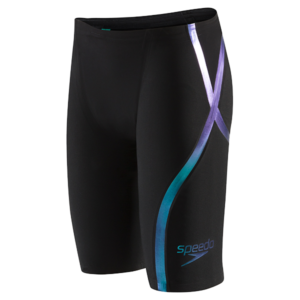
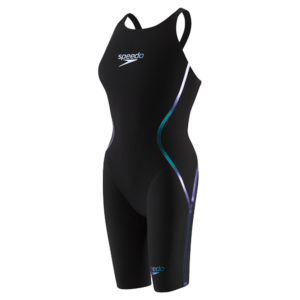 Speedo’s second tier is the LZR Elite 2. Women can purchase this suit with an open or closed back, there is also an option to have traditional straps or stretchier ‘comfort’ straps. Men can pick from a jammer or brief. This suit is engineered from a different material than the Racer, it's named LZR Pulse and it claims to be an excellent water repellent, chlorine resistant, fast drying and highly compressive fabric. So compressive in fact Speedo says it aids in the reduction of muscle oscillation and skin vibration essentially cutting down on drag.
The LZR Pro would still be in line with tier two for Speedo as it is essentially the same composition as the LZR Elite minus the legs. The LZR Pro for women is only offered in the open back, recordbreaker style, but can be purchased with traditional or comfort straps. Men still have the option of a jammer or brief.
Older technology, like the Aquablade line, is still available in women’s recordbreaker open back suits as well as men’s briefs and jammers. They don’t have bonded seams, they don’t have fancy compression or panels but they are an excellent starter suit and still a viable option. The fabric does wick away water to aid with drag reduction and the fabric is chlorine resistant and durable.
Speedo’s second tier is the LZR Elite 2. Women can purchase this suit with an open or closed back, there is also an option to have traditional straps or stretchier ‘comfort’ straps. Men can pick from a jammer or brief. This suit is engineered from a different material than the Racer, it's named LZR Pulse and it claims to be an excellent water repellent, chlorine resistant, fast drying and highly compressive fabric. So compressive in fact Speedo says it aids in the reduction of muscle oscillation and skin vibration essentially cutting down on drag.
The LZR Pro would still be in line with tier two for Speedo as it is essentially the same composition as the LZR Elite minus the legs. The LZR Pro for women is only offered in the open back, recordbreaker style, but can be purchased with traditional or comfort straps. Men still have the option of a jammer or brief.
Older technology, like the Aquablade line, is still available in women’s recordbreaker open back suits as well as men’s briefs and jammers. They don’t have bonded seams, they don’t have fancy compression or panels but they are an excellent starter suit and still a viable option. The fabric does wick away water to aid with drag reduction and the fabric is chlorine resistant and durable.
TYR Tech Suits
As much as the public loves an original like Speedo, TYR has some excellent variety to offer in the tech suit department. TYR’s top tier technical suit is the Avictor. Available to both men and women in a variety of cuts, colors, and patterns you will seen this suit worn by some of the top competitive names in the world. The women’s style is available in an open and closed back, again preference dictates what is best or each individual athlete. Men are given only the jammer option. This suit boasts Super Flex bonding, fully optimizing range of motion to 360 degrees, they are ultra compressive and designed with Hydrosphere Technology. What does this mean!? It means this fabric claims to maximize body position, reduce drag and boost speed and efficiency with its visible hydrospheric effect aka compression. BUT! They have just recently released and promoted the TYR Venzo. Designed with Frictionless Fiber Construction and Surface Lift Technology this suit is said to analyze drag on the microscopic level. The Venzo is also built with special tape called an Endo Compression Cage and also a Seamless Exo Shell. This suit will be available for pre-order around November.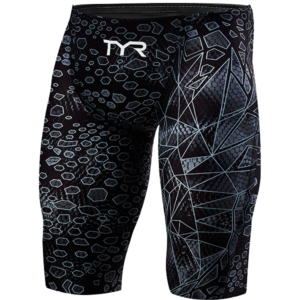
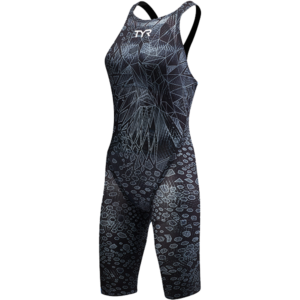 Scaled back the next best thing TYR has to offer is the AP12 Credere. This suit is built to maximize compression via specialized Turbo Compression fabric. This suit still has bonded seams but also special paneling to aid in advanced compression to increase muscle firing and reduce drag. The ROM (range of motion) straps on the female variation are supposed to help maintain distance per cycle. The women’s version can be bought in either an open or closed back, which is pretty standard at this point. Men have the jammer only option.
Take a step back and you find yourself at TYR’s Tracer Light, a favorite of mine. You lose a few bells and whistles here, the seams aren’t bonded but are pretty much the next best thing. The fabric is compressive, and the paneling and general construction of the suit is built around the musculature of the body. For women there is only the open back option on this style. Men are offered a jammer.
Going back to old school the Fusion from TYR is comparable to the Aquablade from Speedo. Think pre 2000 technology. Still a great starter suit, still a great racing suit. No bonded seams here but classic and functional flatlock stitching. This suit is far more durable than its newer counterparts. Like the Aquablades ‘stripes’ that repel water the Fusion has ‘channels.’ It is mildly compressive and water/chlorine resistant as well. Men have the option of a brief or jammer, while women have both a leg and classic cut suit available to them.
Scaled back the next best thing TYR has to offer is the AP12 Credere. This suit is built to maximize compression via specialized Turbo Compression fabric. This suit still has bonded seams but also special paneling to aid in advanced compression to increase muscle firing and reduce drag. The ROM (range of motion) straps on the female variation are supposed to help maintain distance per cycle. The women’s version can be bought in either an open or closed back, which is pretty standard at this point. Men have the jammer only option.
Take a step back and you find yourself at TYR’s Tracer Light, a favorite of mine. You lose a few bells and whistles here, the seams aren’t bonded but are pretty much the next best thing. The fabric is compressive, and the paneling and general construction of the suit is built around the musculature of the body. For women there is only the open back option on this style. Men are offered a jammer.
Going back to old school the Fusion from TYR is comparable to the Aquablade from Speedo. Think pre 2000 technology. Still a great starter suit, still a great racing suit. No bonded seams here but classic and functional flatlock stitching. This suit is far more durable than its newer counterparts. Like the Aquablades ‘stripes’ that repel water the Fusion has ‘channels.’ It is mildly compressive and water/chlorine resistant as well. Men have the option of a brief or jammer, while women have both a leg and classic cut suit available to them.
Arena Tech Suits
With a history of supplying team USA with their technical suits in the past, much like Speedo, Arena has an arsenal of technical suits to choose from. Their high end suit is the Carbon Ultra. Its claim to fame lies within its structure, nothing went without thought and added technology. Their seams are referred to as Infinity Loops with X-Pivot Point, this duo claims to maximize stroke efficiency, body position and rotation. Selling point number two is Ultra Compression Panels, like all the other vendors this is a selling point for multiple reasons. The added compression is not only supportive but can help aid recovery. And finally the Carbon Ultra Cage, this means their material has more carbon fibers than any other of their lines. When suits say more carbon it wants you to know this will be their best suit. It has an inner and outer shell to add to this claim. The Carbon Ultra is available to men in a jammer. Females have the option for an open or closed back leg suit. The Carbon Flex is a teeny step down the scale. It’s compression rating within the Arena company is a five out of five and boasts Arena’s V-Flex Construction. In normal person terms this suit has seams designed to give you freedom of motion. Power Return Construction is another term they use, which is a fancy way of saying the compression will make you feel good. The Flex is available to men in a jammer and women in an open and closed back.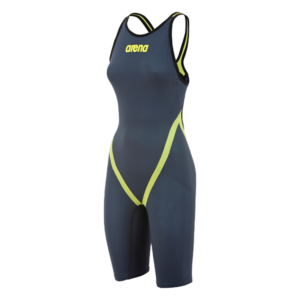 Next up we have the Carbon Air, this suit material is more lightweight than the two previous and most comparable to paper suits of old. Not too many technical terms here as this is an older model but it has the standard bonded seams and compression.
This style is available to men in a jammer and women in an open or closed back.
Take another step down the ladder and you find the Carbon Pro. This suit is seemingly being phased out and is on sale most places I am seeing it online. It has a minimal blurb about it on the Arena site stating it has excellent fit and intelligent muscle compression. This means it is a good racing suit and more than fine for just about any swimmer out there.
The Pro is available in a jammer for men and an open back for women.
And at the final rung you will find the Arena Powerskin ST line. Constructed from X-Raptor fabric this suit will fit like a second skin and dry quickly. This suit will have less compression than those higher on the ladder but this is still a great suit. Don’t let the lack of fancy terms, minus X-Raptor of course, fool you.
This suit is available for men in a brief and jammer. Women can choose from an open back short john (leg suit) or a classic swimsuit with no legs.
Next up we have the Carbon Air, this suit material is more lightweight than the two previous and most comparable to paper suits of old. Not too many technical terms here as this is an older model but it has the standard bonded seams and compression.
This style is available to men in a jammer and women in an open or closed back.
Take another step down the ladder and you find the Carbon Pro. This suit is seemingly being phased out and is on sale most places I am seeing it online. It has a minimal blurb about it on the Arena site stating it has excellent fit and intelligent muscle compression. This means it is a good racing suit and more than fine for just about any swimmer out there.
The Pro is available in a jammer for men and an open back for women.
And at the final rung you will find the Arena Powerskin ST line. Constructed from X-Raptor fabric this suit will fit like a second skin and dry quickly. This suit will have less compression than those higher on the ladder but this is still a great suit. Don’t let the lack of fancy terms, minus X-Raptor of course, fool you.
This suit is available for men in a brief and jammer. Women can choose from an open back short john (leg suit) or a classic swimsuit with no legs.
Bottom Line:
These vendors are trying to convince you their suit is the best suit. It will make you or your swimmer faster than the other options. Honestly after reading all the descriptions myself it is overwhelming. The volume of fancy names and terms made to lure you bothers me. These suits make more of a difference in the feel and confidence departments located inside the swimmer’s head. Much like the days of not shaving your legs, then shaving you whole body and jumping in the water, you FEEL different. It’s a signal to your brain. Your body knows that feeling means go time. Putting on a tech suit does that. Step One: Before you begin prepare yourself mentally for sticker shock. Tech suits are a temporary investment with a limited life. Choosing the suit that is right for you or your swimmer starts here, decide on your budget but understand most tech suits start at $100 and move up swiftly. Take a deep breath, you are paying for the research that went into the individual suit more than the materials and manufacturing. Step Two: Try them on or get fitted. Some retailers will have a selection of suits specifically for fitting and if they don’t they should have someone available to measure and help fit you. This isn’t your only option of course. Talk to friends, other parents, older swimmers on your kid’s team and see if they have one that they have you could potentially borrow to try on. Never buy blind. Step Three: Research. Talk to other swimmers about what they like and why. Read online reviews. The more information you gather the less likely you will be disappointed in your purchase. This includes visiting each manufacturer’s website or catalog to read about suit specifics. Some tech suits are built specifically for added compression and some for water wicking. Even events matter. Narrow down what qualities are most important to you. Women, you have a harder task, there are multiple back, neck, and leg styles to choose from. Most of the choices boil down to personal preference, but some may be event or stroke related. Men have it a bit easier with only having to contend with leg styles. Make sure your suit is FINA approved, if it isn’t you risk disqualification. FINA approved suits are all marked with a white sticker that looks like a QR code. Step Four: Test it out pre-event. Wearing your suit once before your big meet will not ruin it, but it will give you the opportunity to get comfortable with the way it feels in the water. Go through all your strokes, turns, and dives so there are no surprises. Step Five: If all else fails start with a lower end suit and work your way up. The information out there can be overwhelming but you can always upgrade as you determine your needs. There are some outstanding basic/beginner tech suits available and they are considerably more budget friendly.Learn More About Swimwear:
- Choosing Swimsuit Fabric: An Ultimate Guide to Swimsuit Material
- Swim Shorts vs. Speedos
- The Different Types of Fabric Used in Swimsuits
- What To Look For When Choosing A One-Piece Swimsuit
- Competitive Swimwear Sizing Guide
- How To Choose A Technical Swimsuit
- Understanding the 12 & Under Technical Suit Ban
- Training Suits Explored and Explained Brand Edition: TYR




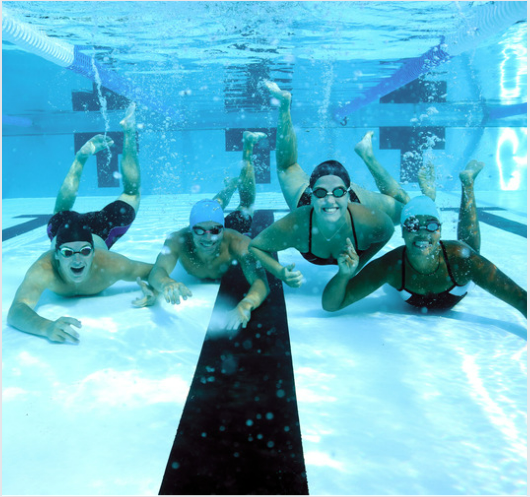


Leave a Comment
Your email address will not be published. Required fields are marked *